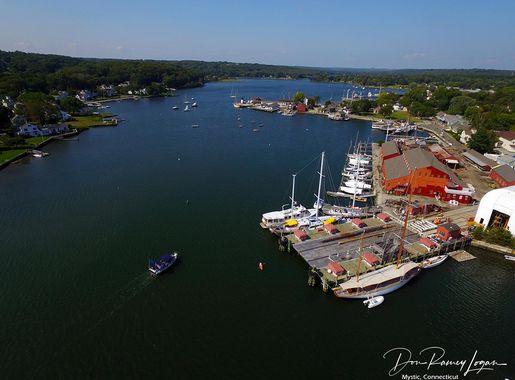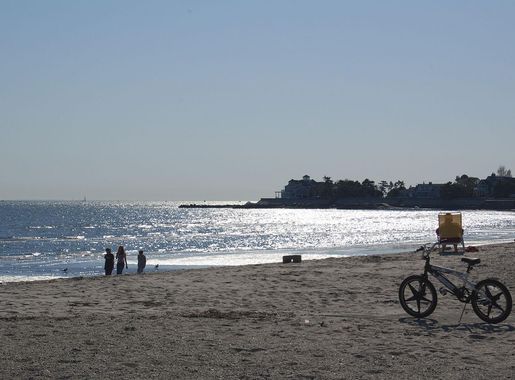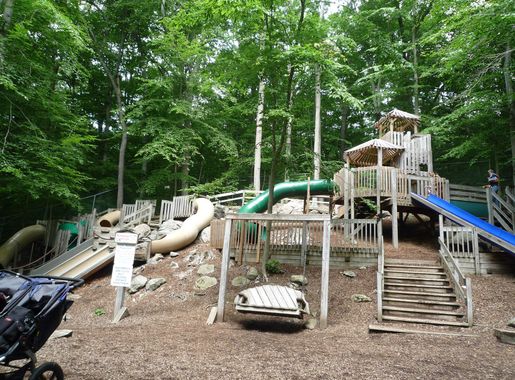
Long Island Sound: Connecticut's Coastal Gem
Discover Long Island Sound in Connecticut: A Coastal Paradise with Charming Towns, Rich History, and Endless Outdoor Activities.
Long Island Sound, nestled along the coast of Connecticut, is a serene escape for nature enthusiasts and beach lovers. This estuary, stretching over 600 miles, offers a unique blend of sandy beaches, rocky coastlines, and charming seaside towns. Its diverse ecosystem supports a variety of marine life, making it a haven for fishing, boating, and bird-watching. The picturesque towns along Long Island Sound, such as Mystic, New Haven, and Greenwich, boast rich histories and vibrant cultural scenes. Visitors can explore historic sites, enjoy fresh seafood at waterfront restaurants, and stroll through quaint downtown areas. Each town offers its own unique charm and attractions, from Mystic Seaport's maritime museum to Yale University's prestigious campus in New Haven. Outdoor activities abound in Long Island Sound. Hiking trails, such as those in Hammonasset Beach State Park, provide stunning coastal views and opportunities to spot native wildlife. Kayaking and paddleboarding are popular ways to explore the calm waters, while sunset cruises offer breathtaking views of the horizon. Whether you're seeking relaxation or adventure, Long Island Sound has something to offer everyone.
Local tips in Long Island Sound
- Visit during the fall for stunning foliage and fewer crowds.
- Try the local seafood; the clam chowder and lobster rolls are a must.
- Bring binoculars for bird-watching, especially at the Connecticut Audubon Society Coastal Center.
- Check the tide schedules if you plan to go kayaking or paddleboarding.
- Explore the small museums and art galleries in the coastal towns for a taste of local culture.
Long Island Sound: Connecticut's Coastal Gem
Long Island Sound, nestled along the coast of Connecticut, is a serene escape for nature enthusiasts and beach lovers. This estuary, stretching over 600 miles, offers a unique blend of sandy beaches, rocky coastlines, and charming seaside towns. Its diverse ecosystem supports a variety of marine life, making it a haven for fishing, boating, and bird-watching. The picturesque towns along Long Island Sound, such as Mystic, New Haven, and Greenwich, boast rich histories and vibrant cultural scenes. Visitors can explore historic sites, enjoy fresh seafood at waterfront restaurants, and stroll through quaint downtown areas. Each town offers its own unique charm and attractions, from Mystic Seaport's maritime museum to Yale University's prestigious campus in New Haven. Outdoor activities abound in Long Island Sound. Hiking trails, such as those in Hammonasset Beach State Park, provide stunning coastal views and opportunities to spot native wildlife. Kayaking and paddleboarding are popular ways to explore the calm waters, while sunset cruises offer breathtaking views of the horizon. Whether you're seeking relaxation or adventure, Long Island Sound has something to offer everyone.
When is the best time to go to Long Island Sound?
Unmissable attractions to see
The Maritime Aquarium at Norwalk
Experience the wonders of marine life at The Maritime Aquarium at Norwalk, where education meets entertainment in a stunning aquatic setting.
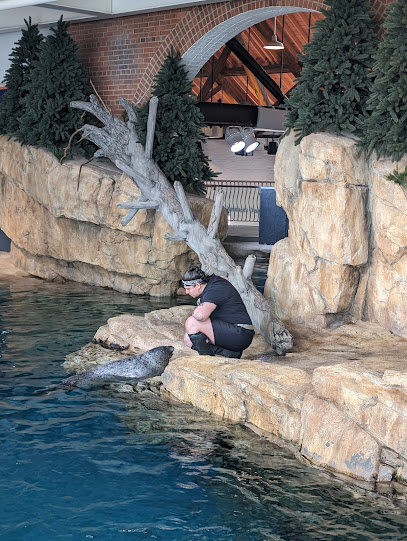
Long Island Aquarium
Explore the captivating marine world at Long Island Aquarium, a top family-friendly attraction in Riverhead, New York, featuring interactive exhibits and stunning wildlife.
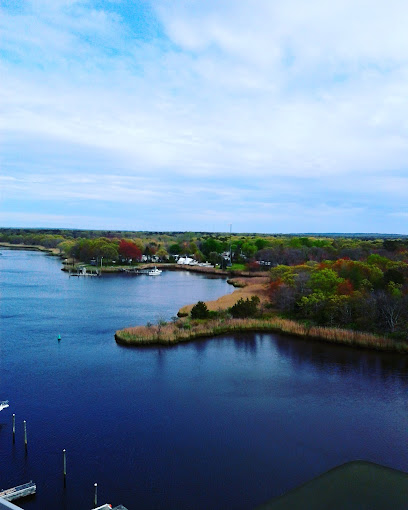
Seaside Park
Discover the serene beauty of Seaside Park in Bridgeport, Connecticut, where sandy beaches meet lush landscapes for a perfect outdoor escape.
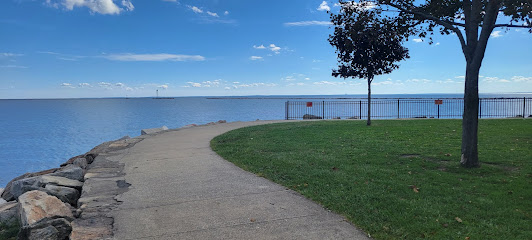
Connecticut's Beardsley Zoo
Discover Connecticut's Beardsley Zoo, where wildlife meets conservation in a delightful family-friendly atmosphere, perfect for all ages.
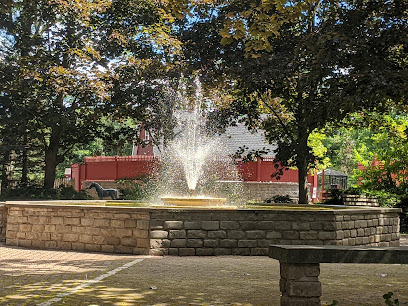
New Haven Green
Discover the tranquility of New Haven Green, a historic park in the heart of New Haven, Connecticut, surrounded by culture, history, and natural beauty.

Lighthouse Point Park
Experience the natural beauty and rich history of Lighthouse Point Park, a serene coastal retreat in New Haven, Connecticut.

Old Westbury Gardens
Explore Old Westbury Gardens: A Majestic Blend of History, Nature, and Elegance in Long Island.

Yale University Art Gallery
Explore the rich collection of the Yale University Art Gallery, where art and history come together in a stunning architectural setting.

East Rock Park
Explore East Rock Park: A serene retreat with breathtaking views, diverse trails, and rich biodiversity in the heart of New Haven, Connecticut.
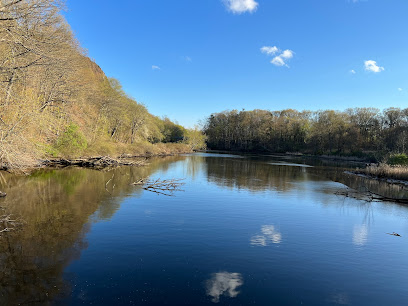
Planting Fields Arboretum State Historic Park
Explore the serene landscapes and historical charm of Planting Fields Arboretum, a must-visit park in Oyster Bay, New York, perfect for nature lovers.
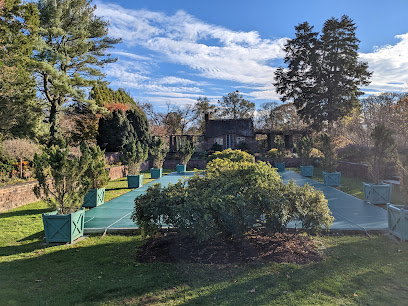
Holcombe Rucker Park
Experience the legendary Holcombe Rucker Park, a vibrant hub of basketball culture in the heart of Manhattan, where community and talent unite.

United Palace
Experience the cultural richness of Manhattan at the United Palace, a stunning performing arts theater and live music venue that also serves as a spiritual haven.

PEZ Visitor Center
Explore the colorful world of PEZ at the Visitor Center in Orange, CT, where nostalgia meets fun for the whole family!
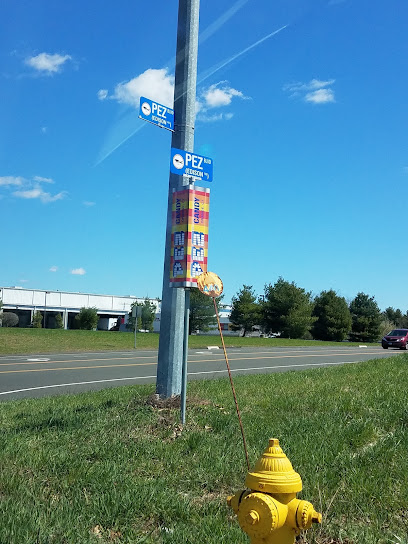
Caumsett State Historic Park Preserve
Explore the beauty and history of Caumsett State Historic Park Preserve, a serene retreat on Long Island's North Shore, perfect for nature lovers and history buffs.
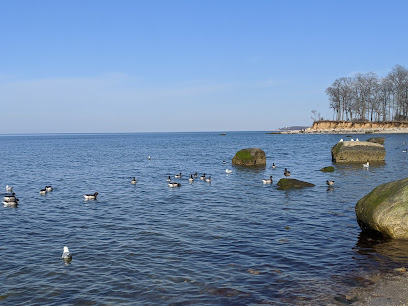
Savin Rock Park
Discover the beauty of Savin Rock Park, a charming public beach and park in West Haven, Connecticut, perfect for outdoor fun and relaxation.
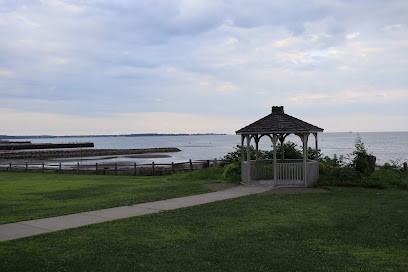
Essential places to dine
Cracker Barrel Old Country Store
Experience authentic Southern cuisine at Cracker Barrel Old Country Store in Milford – where comfort food meets charming country hospitality.

Cava
Discover the elegance of fine Italian dining at Cava in Southington - where culinary excellence meets an inviting atmosphere.

Frank Pepe Pizzeria Napoletana
Experience authentic Italian flavors at Frank Pepe Pizzeria Napoletana in Waterbury - home of the legendary coal-fired pizza.
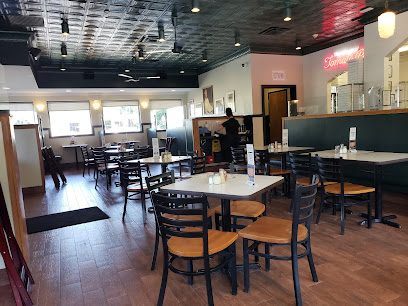
Chili's Grill & Bar
Experience family-friendly dining at Chili's Grill & Bar in Waterbury, CT—where American flavors meet Tex-Mex zest.
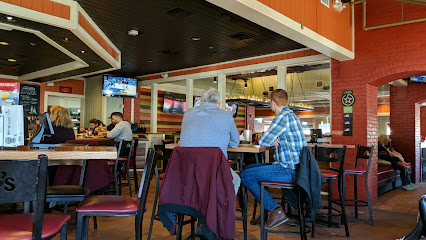
Friendly's
Experience the charm of Friendly's in Naugatuck – where delicious burgers meet delightful ice cream in a family-friendly setting.
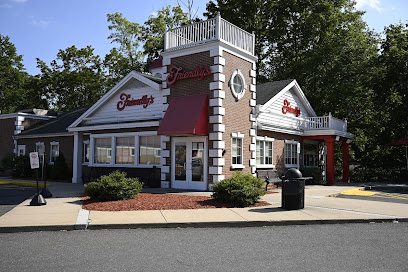
McDonald's
Experience convenient dining at McDonald's Naugatuck with delicious fast food options including breakfast items, burgers, coffee, and more.

Zuppa - Unique Italian Pub
Experience authentic Italian flavors at Zuppa - where traditional cuisine meets modern pub culture in Wolcott.
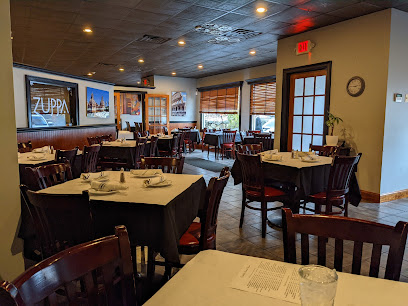
Jacob's Pickles South Norwalk
Discover the charm of Southern cuisine at Jacob's Pickles in South Norwalk – where comfort food meets warm hospitality.
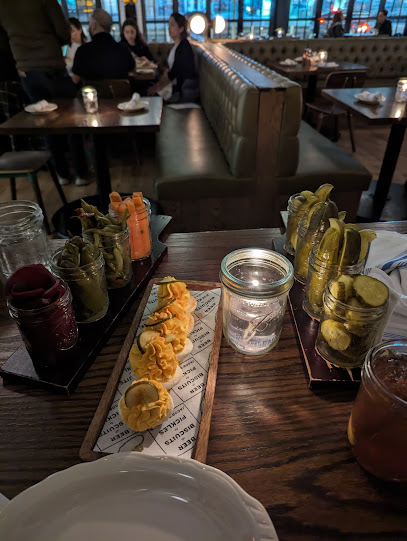
Wendy's
Discover classic fast food flavors at Wendy's in Southington—perfect for a quick meal during your travels.

Popeyes Louisiana Kitchen
Savor the bold flavors of Cajun cuisine at Popeyes Louisiana Kitchen - your go-to spot for delicious fried chicken and seafood in Milldale.

Esme's and Ruby's Restaurant
Experience hearty meals at Esme's and Ruby's Restaurant - where classic diner favorites meet warm hospitality in Thomaston.
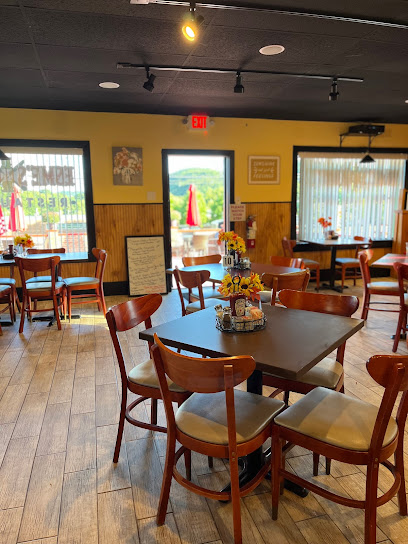
Subway
Experience freshness at Subway in Milldale - where customizable sandwiches meet quick service and healthy choices for every traveler.
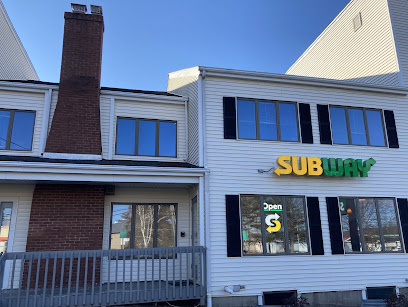
Five Guys Flippin Pies
Experience authentic Italian pizza at Five Guys Flippin Pies in Wolcott, CT – where every slice tells a delicious story!

Five Guys
Savor mouthwatering burgers and hand-cut fries at Five Guys in Waterbury, CT - the ultimate destination for fast food lovers!
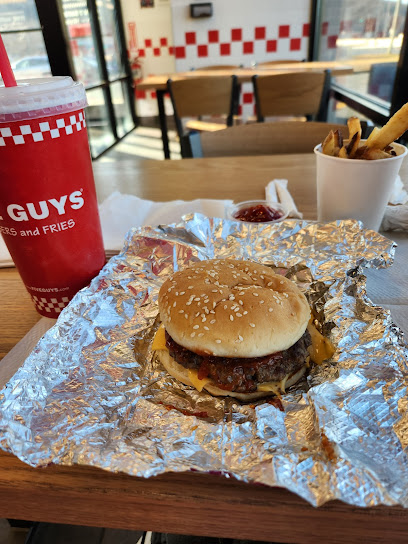
Markets, malls and hidden boutiques
The Book Barn
Discover the charm of The Book Barn in Niantic, where every corner holds a literary treasure waiting to be explored.
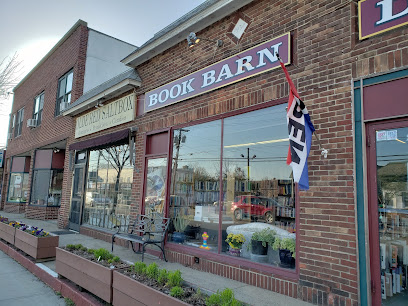
The SoNo Collection
Explore The SoNo Collection in Norwalk, CT, where shopping meets dining and entertainment in a stunning modern setting.

NaturalAnnie Essentials Candle Making Bar & Shop
Unleash your creativity at NaturalAnnie Essentials Candle Making Bar & Shop in Bridgeport, CT - a unique gift shop and crafting experience.

The Shoppes at East Wind
Experience unique shopping and gourmet delights at The Shoppes at East Wind, a charming shopping mall in Long Island, NY.
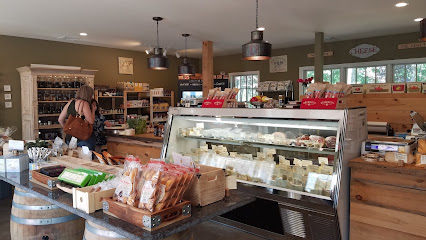
Atiana's Boutique
Explore Atiana's Boutique in Milford, CT, for exquisite bridal gowns and elegant formal wear in a personalized shopping experience.
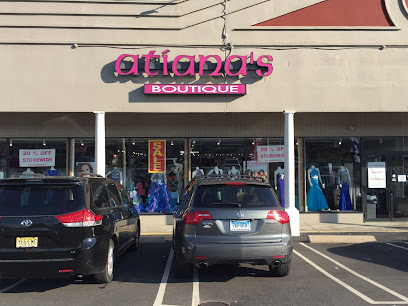
The Archive
Explore The Archive in Bridgeport, CT - a treasure trove of vinyl records and vintage videos, perfect for music and film enthusiasts.
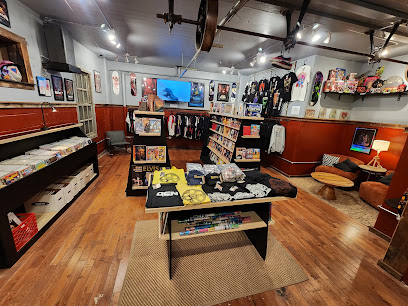
Strange Ways
Shop at Strange Ways in New Haven for unique gifts, trendy fashion accessories, and local home goods that capture the spirit of the city.
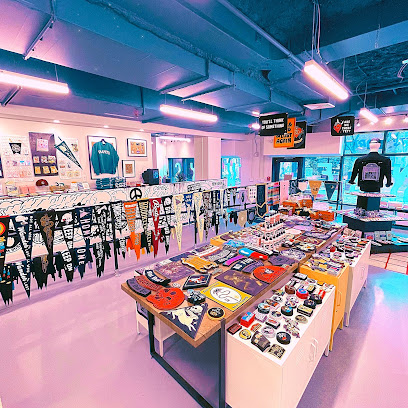
Curious Goods New Age Shop
Explore the mystical treasures at Curious Goods New Age Shop, where crystals, herbs, and spiritual supplies await to enhance your journey.

Rock Garden
Explore the enchanting Rock Garden in Branford, Connecticut, where unique gifts, stunning crystals, and metaphysical treasures await every visitor.

Bohemian High LLC
Discover a treasure trove of unique gifts and exquisite glass art at Bohemian High, Milford's artistic gem.
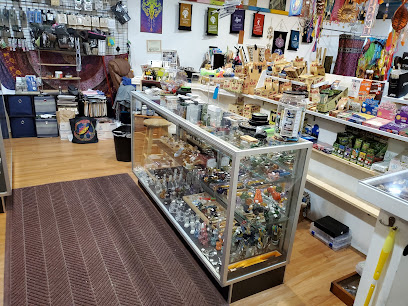
BSC Store USA
Explore BSC Store USA for trendy clothing and exceptional service, a must-stop for tourists seeking stylish finds.

Group W Bench
Explore the vibrant artistry and quirky gifts at Group W Bench, a unique gift shop and art gallery in New Haven, capturing the essence of local culture.
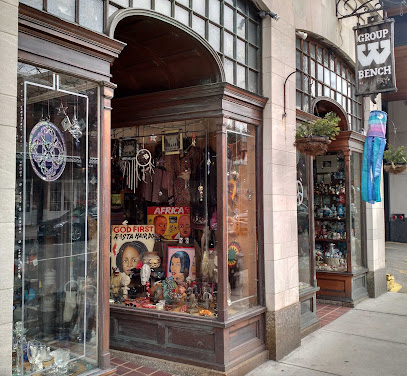
Jesse's Toys
Explore Jesse's Toys in Orange, CT, where imagination comes alive with an incredible selection of toys, games, and collectibles for all ages.
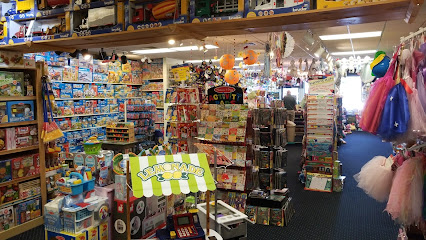
Five Below
Discover an array of affordable treasures at Five Below, where every item is $5 or less, making it the perfect shopping spot for tourists in Branford.

Simple Good
Explore Simple Good in Port Jefferson for unique gifts and artisanal treasures, showcasing local craftsmanship and creativity.
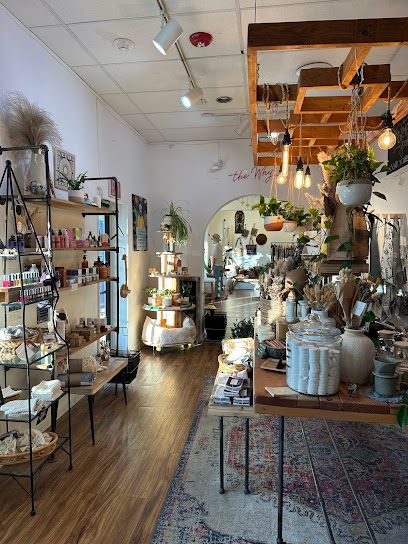
Essential bars & hidden hideouts
Captain's Cove Seaport (Marina, Restaurant & Bar)
Experience the charm of Captain's Cove Seaport, a lively marina and restaurant in Bridgeport, CT, offering delicious food and stunning waterfront views.
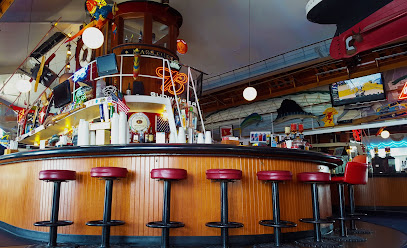
Joey C's Boathouse Cantina & Grill
Discover the perfect blend of American and Mexican flavors at Joey C's Boathouse, where great food meets live music in a stunning waterfront setting.
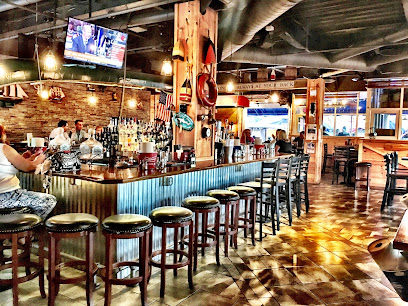
Barcade
Discover Barcade in New Haven, where vintage arcade games meet craft beers for an unforgettable experience.
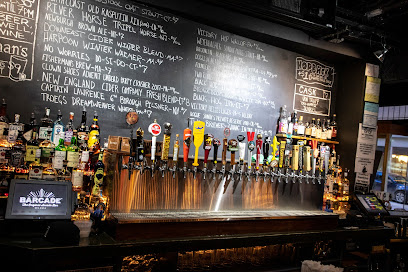
Whiskey Barrel
Experience a delightful blend of flavors at Whiskey Barrel, Stratford's top grill and bar, offering delicious burgers, BBQ, and refreshing drinks.
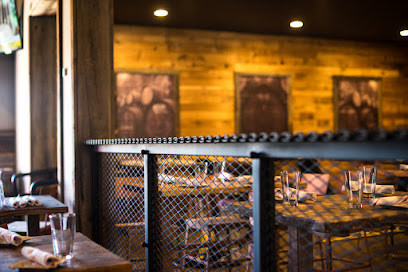
Archie Moore's Bar & Restaurant
Discover the vibrant taste of American cuisine at Archie Moore's Bar & Restaurant in Milford, Connecticut, where every meal is a celebration.

Dive Bar & Restaurant
Experience the vibrant flavors of the Caribbean at Dive Bar & Restaurant, where ocean views meet delicious grill favorites in West Haven, CT.
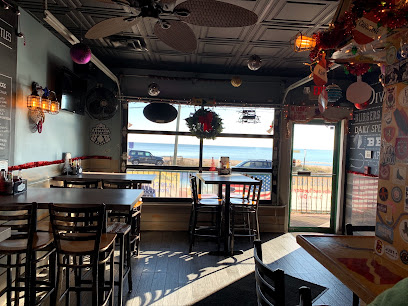
Windmill Tavern
Experience the warmth of American dining at Windmill Tavern in Stratford, where hearty meals and friendly service await.
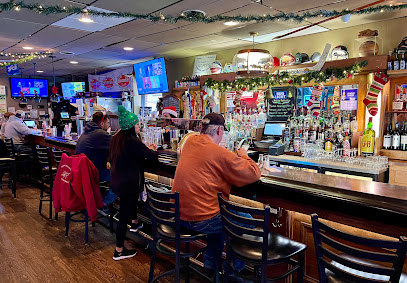
Elm City Social
Discover the vibrant nightlife at Elm City Social, a premier cocktail bar and gastropub in New Haven, offering crafted cocktails and delicious cuisine.
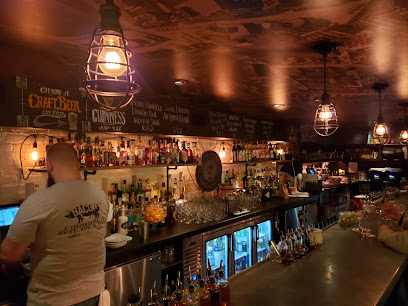
Cafe Nine
Discover the vibrant atmosphere and live performances at Cafe Nine, New Haven's favorite music bar and cultural hub.
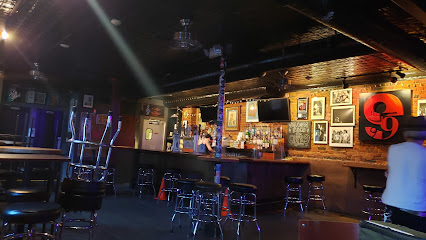
Spotted Horse Tavern
Discover the vibrant atmosphere and delicious American cuisine at Spotted Horse Tavern in Westport, CT - a perfect dining spot for tourists!
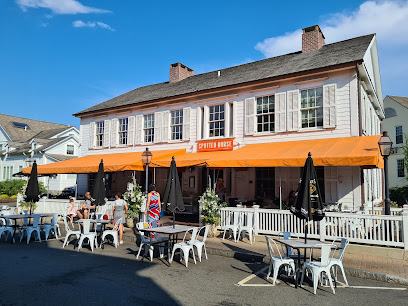
Orange Ale House & Grille
Discover the lively ambiance of Orange Ale House & Grille, a premier grill and live music venue in Orange, CT, offering delicious food and vibrant entertainment.
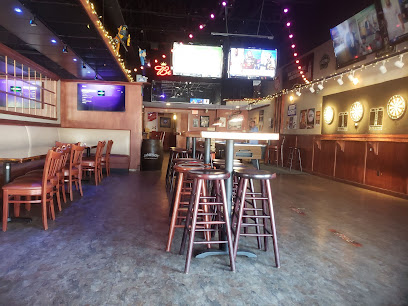
Gipper's Restaurant & Ale House
Experience the vibrant atmosphere of Gipper's Restaurant & Ale House in Milford, CT, where delicious grill favorites and craft brews meet sports excitement.
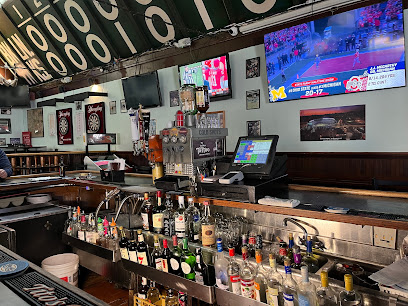
The Trinity Bar & Restaurant
Discover the perfect blend of delicious cuisine and vibrant nightlife at The Trinity Bar & Restaurant in downtown New Haven, CT.
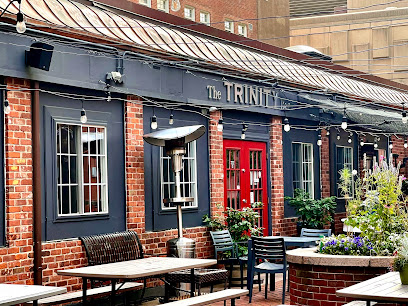
Ordinary
Discover Ordinary, New Haven's premier cocktail bar, offering a unique blend of innovative drinks and vibrant nightlife in a chic atmosphere.
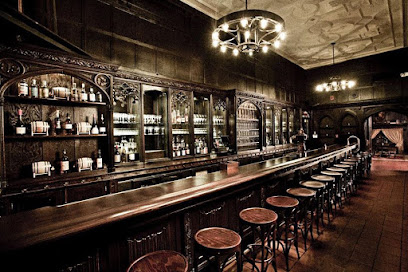
Rum & Tequilla Fusion
Discover a culinary haven at Rum & Tequilla Fusion, where flavorful grilled dishes meet an extensive selection of rums and tequilas in Bridgeport.
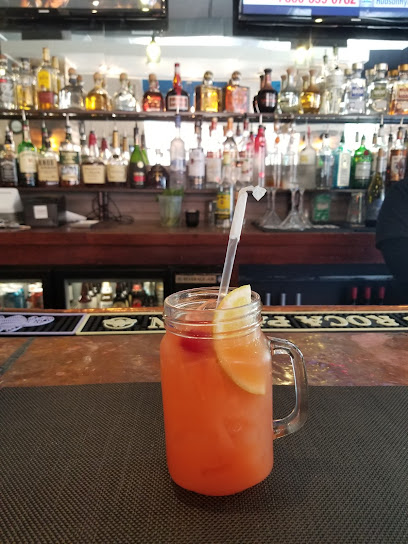
Local Phrases about Long Island Sound
-
- HelloHey
[hey] - GoodbyeSee ya
[see ya] - YesYeah
[yeah] - NoNah
[nah] - Please/You're welcomePlease/No problem
[please/no problem] - Thank youThanks
[thanks] - Excuse me/SorryExcuse me/Sorry
[excuse me/sorry] - How are you?How ya doin'?
[how ya doin'] - Fine. And you?Good. You?
[good. you?] - Do you speak English?Ya speak English?
[ya speak english?] - I don't understandI don't get it
[i don't get it]
- HelloHey
-
- I'd like to see the menu, pleaseCan I check out the menu?
[can i check out the menu?] - I don't eat meatI'm veg
[i'm veg] - Cheers!Cheers!
[cheers!] - I would like to pay, pleaseI'll settle up now, thanks
[i'll settle up now, thanks]
- I'd like to see the menu, pleaseCan I check out the menu?
-
- Help!Help!
[help!] - Go away!Get lost!
[get lost!] - Call the Police!Get the cops!
[get the cops!] - Call a doctor!Call a doc!
[call a doc!] - I'm lostI'm lost
[i'm lost] - I'm illI'm sick
[i'm sick]
- Help!Help!
-
- I'd like to buy...I wanna grab...
[i wanna grab...] - I'm just lookingJust browsing
[just browsing] - How much is it?How much?
[how much?] - That's too expensiveToo much
[too much] - Can you lower the price?Can you do better?
[can you do better?]
- I'd like to buy...I wanna grab...
-
- What time is it?What time?
[what time?] - It's one o'clockIt's one
[it's one] - Half past (10)Half ten
[half ten] - MorningMornin'
[mornin'] - AfternoonAfternoon
[afternoon] - EveningEvenin'
[evenin'] - YesterdayYesterday
[yesterday] - TodayToday
[today] - TomorrowTomorrow
[tomorrow] - 1One
[one] - 2Two
[two] - 3Three
[three] - 4Four
[four] - 5Five
[five] - 6Six
[six] - 7Seven
[seven] - 8Eight
[eight] - 9Nine
[nine] - 10Ten
[ten]
- What time is it?What time?
-
- Where's a/the...?Where's the...?
[where's the...?] - What's the address?What's the address?
[what's the address?] - Can you show me (on the map)?Show me (on the map)
[show me (on the map)] - When's the next (bus)?When's the next (bus)?
[when's the next (bus)?] - A ticket (to ....)A ticket (to ....)
[a ticket (to ....)]
- Where's a/the...?Where's the...?
History of Long Island Sound
-
Long Island Sound was originally inhabited by the indigenous Algonquian-speaking peoples, including the Pequot, Mohegan, and Niantic tribes. These tribes thrived on the abundant resources provided by the Sound, such as fish, shellfish, and fertile land. European exploration began in the early 17th century, with the Dutch and English establishing settlements along its shores.
-
The Pequot War was a critical conflict between the Pequot tribe and English settlers, along with their Native American allies. This war had significant consequences for the indigenous populations in the area. The Mystic Massacre in 1637, where English forces attacked a Pequot village near the Mystic River, marked a turning point that led to the near-destruction of the Pequot tribe.
-
During the colonial period, Long Island Sound became a bustling hub of trade and commerce. The Sound's strategic location facilitated the exchange of goods between the colonies and Europe. Ports like New Haven and New London thrived, contributing to the economic growth of the region. The Sound also played a role in the infamous Triangle Trade, linking New England, the West Indies, and Africa.
-
Long Island Sound held strategic importance during the American Revolutionary War. Both British and American forces recognized its value for maritime operations. Notable events include the Battle of Groton Heights in 1781, where British forces attacked Fort Griswold in Groton, leading to a significant American defeat. Privateers also used the Sound to disrupt British supply lines.
-
During the War of 1812, Long Island Sound was again a significant maritime theater. The British blockade of American ports affected trade and commerce in the region. Noteworthy incidents included the British raid on Essex in 1814, where they burned ships and plundered the town. This event underscored the vulnerability of coastal communities during the conflict.
-
In the 19th century, the whaling industry became a major economic driver for towns along Long Island Sound, especially New London. Whaling ships embarked on long voyages to hunt whales for their oil, which was a valuable resource for lighting and lubrication. The industry's legacy is still visible today in the historic buildings and artifacts preserved in the region.
-
The advent of railroads in the mid-19th century transformed Long Island Sound into a vital transportation corridor. Towns such as New Haven became industrial powerhouses, with factories and mills lining the shore. The railroads facilitated the movement of goods and people, further integrating the region into the national economy.
-
During World War II, Long Island Sound was strategically important for the United States Navy. The Electric Boat Company in Groton produced submarines for the war effort, solidifying the area's reputation as a leader in submarine warfare. The Sound also served as a training ground for naval operations, contributing to the Allied victory.
-
In the latter half of the 20th century, environmental conservation became a key focus for Long Island Sound. Pollution and overfishing had taken a toll on the ecosystem, leading to initiatives aimed at restoring and protecting the Sound's natural resources. The establishment of the Long Island Sound Study in 1985 marked a concerted effort to address these environmental challenges.
-
Today, Long Island Sound is celebrated for its cultural and recreational significance. The Sound's picturesque coastline is dotted with charming towns, historical landmarks, and recreational facilities. Activities such as sailing, fishing, and beachcombing are popular among locals and tourists alike, highlighting the Sound's enduring appeal as a cherished natural and cultural resource.
Long Island Sound Essentials
-
Long Island Sound in Connecticut is easily accessible from various locations. If you are flying, the closest major airports are Bradley International Airport in Hartford, CT, and John F. Kennedy International Airport in New York City. From these airports, you can rent a car or take a shuttle service. Amtrak and Metro-North trains also service the area, with stops in New Haven and Stamford. If driving, Interstate 95 runs along the coast and provides direct access to many towns along the Sound.
-
Once you are in the area, you have several transportation options. Renting a car is the most convenient way to explore the region at your own pace. Public transportation is available via local buses and the Metro-North Railroad, which connects to many towns along the coast. Ride-sharing services like Uber and Lyft are also widely available. Biking is another popular way to get around, especially in more scenic areas.
-
The official currency is the United States Dollar (USD). Credit and debit cards are widely accepted, but it's always a good idea to have some cash on hand for smaller establishments or in rural areas. ATMs are readily available in most towns. Contactless payment methods like Apple Pay and Google Wallet are also accepted in many places.
-
Long Island Sound is generally a safe destination for tourists. However, it is wise to exercise standard precautions. Avoid walking alone at night in unfamiliar areas and keep your belongings secure. New Haven has certain neighborhoods with higher crime rates; avoid areas like the Hill and Newhallville at night. Always be aware of your surroundings and use common sense.
-
In case of an emergency, dial 911 for immediate assistance. Hospitals and urgent care facilities are located throughout the region, including Yale New Haven Hospital in New Haven. Pharmacies are also widely available for minor health issues. It is advisable to have travel insurance that covers medical emergencies.
-
Fashion: Do dress in layers as the weather can be unpredictable. Don't wear overly revealing clothing in public places. Religion: Do respect local places of worship and follow any posted guidelines. Public Transport: Do be courteous and give up your seat to elderly or disabled passengers. Don't eat or drink on public transport. Greetings: Do greet people with a smile and a handshake. Don't be overly familiar unless you know the person well. Eating & Drinking: Do try local seafood and other specialties. Don't refuse food or drink offerings as it can be seen as impolite.
-
To experience Long Island Sound like a local, visit the farmers' markets for fresh produce and local goods. Engage with residents who are often friendly and willing to share insights about the area. Don't miss out on the seafood, especially the clam chowder and lobster rolls. Take a boat tour to explore the Sound from the water and visit local lighthouses. Enjoy a day at the beach, but arrive early to secure a good spot.
Nearby Cities to Long Island Sound
-
Things To Do in Stamford
-
Things To Do in Greenwich
-
Things To Do in Bridgeport
-
Things To Do in White Plains
-
Things To Do in Danbury
-
Things To Do in Milford
-
Things To Do in Long Island
-
Things To Do in Yonkers
-
Things To Do in New Haven
-
Things To Do in Hoboken
-
Things To Do in New York City
-
Things To Do in Paterson
-
Things To Do in Jersey City
-
Things To Do in Waterbury
-
Things To Do in Meriden

